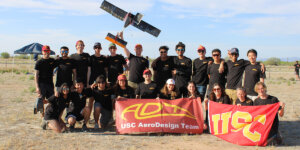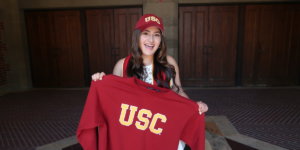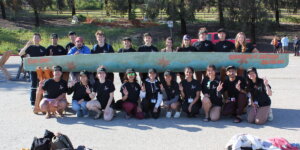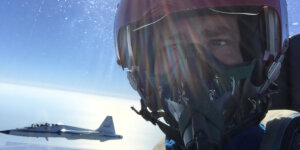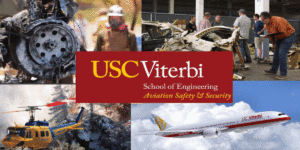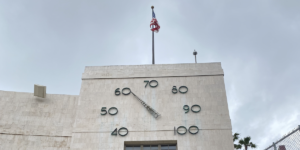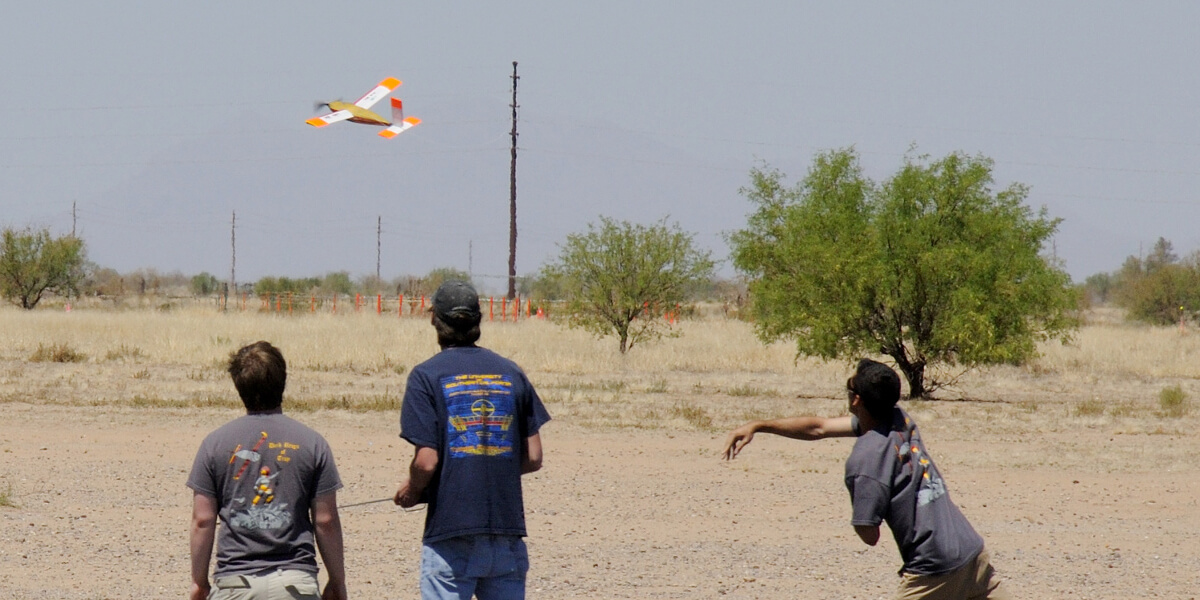
Hand launching the AeroDesign Team’s 2010-11 plane, “RFB.” Photo/AeroDesign Team
USC Viterbi’s AeroDesign Team spends each year designing and testing a brand-new remote-controlled aircraft for the annual Design Build Fly competition, hosted by the American Institute of Aeronautics and Astronautics each spring.
“The plane flew unlike anything anyone else had ever seen!” – Radovich
Each competition has a new set of design and flight challenges that reflect real-world scenarios – from a portable unmanned aerial vehicle (UAV) for soldiers that can fit inside a suitcase, to this year’s passenger and cargo plane that must carry bouncy balls (the “passengers”) and rectangular blocks (the “cargo”) of varying size and weight.
At USC since 1999, first as a student and now as senior lecturer in the Department of Aerospace and Mechanical Engineering (AME), Charles Radovich is no stranger to the competition’s unique missions. He joined the team in 2000 as a junior and was an active member for two years. He stayed in contact with team members while working towards his master’s and Ph.D. degrees. Then, in 2010, he rejoined the team in a full-time capacity, but now as the team’s faculty adviser.
Here, Radovich shares his top five competitions from the years he has spent with the team, so far:
5. Year: 2014-15, Plane: SCnoopy, Result: 17th Place
This one wasn’t about the final standing; it was about the risky and creative aircraft configuration they produced for competition. A typical USC ADT plane will include three servo motors. The team set out to make a one servo aircraft, which by all measures is crazy. They couldn’t get the throttle working with the flight controls, so in the final week they settled on a two-servo aircraft.
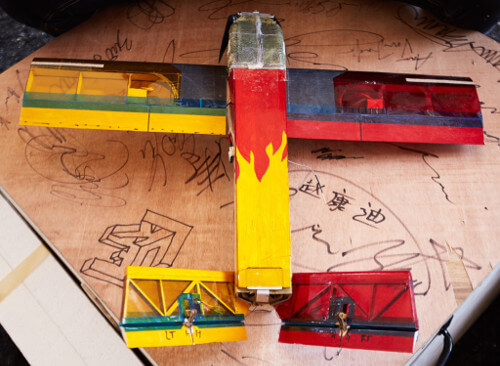
“StarSCream” Photo/USC AeroDesign Team
The plane flew unlike anything anyone else had ever seen! And it was awesome to see the admiration at the competition whenever USC ADT took to the sky. The tents cleared as everyone came to watch our plane fly in disbelief that we were actually able to make this configuration work. Every other team flew with three or more servos, so we were clearly in a league of our own. A crash on the final mission broke our hearts as it looked like we would place if we could complete the flight. This type of risk taking is a common theme with the team. They usually identify multiple design solutions that will perform well at competition, but often pick the solution that is most different from previous year’s just so they can challenge themselves to work on something new.
4. Year: 2016-17, Plane: StarSCream, Result: 1st Place
Winning never gets old! Seeing the team attack a challenge for so many months and then earn the ultimate payoff at competition is just awesome. Unique aspects: a hand-launched airplane. It was the first since 2010-11, so an all-new challenge for this year’s team. They learned the important lesson in hand-launching that finesse is much more critical than brute force. The team must have built 20 planes that year as we figured this out the hard way. With no landing gear, most failed launch attempts resulted in major destruction. But, determined to be successful, they never quit trying.
3. Year: 2013-14, Plane: MiSChief, Result: 1st Place

“MiSChief” Photo/AeroDesign Team
This was my first win as adviser. I had never been so anxious and excited at the same time. Again, seeing the students reap the rewards of a year’s worth of hard work was inspiring. Unique aspects: low weight was a major factor. The team used Kevlar for the fuselage, along with two other teams (MIT & Virginia Tech). This met our needs that particular year, but it was flattering to see about one-third of the following year’s teams show up with a Kevlar fuselage – even if it didn’t really help their design. Kevlar was the new black, and we’d like to think USC ADT started the trend.
2. Year: 2010-11, Plane: RFB, Result: 2nd Place
This was my first year as a faculty adviser. It was an awesome experience getting to know and help guide such talented students. Unique aspects: hand-launched, small-scale aircraft. The team really stepped up their analysis efforts this year, and one of the products was a custom airfoil (the BA527, named by the designer Ben Ackerman) which has become a staple of the USC AeroDesign Team.
1. Year: 2001-02, Plane: SCrewball, Result: 2nd Place
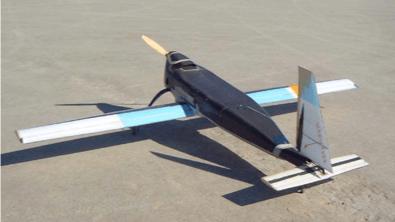
“SCrewball” Photo/AeroDesign Team
I started attending team meetings and visiting the lab as a junior but didn’t make any significant contributions until my senior year (2001-02). Most of my memories come from construction and in-lab testing efforts with the Landing Gear Lead, Charles Heintz. One test involved loading the landing gear with weight that met the worst-case expected scenario. If it survived that, then it should have no problem handling normal landing loads. The airplanes were much bigger back then, so we often had to get creative in finding large enough weights to stack on the gear and, for one particular iteration, our Program Manager David Lazzara (now a part-time lecturer for AME) was the perfect match. This leads me to #1 on the list. Getting to see something I helped build take to the sky (and fly well) – there’s no better feeling.
Published on February 26th, 2018
Last updated on May 16th, 2023




